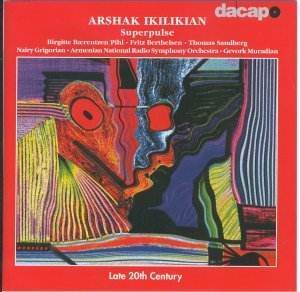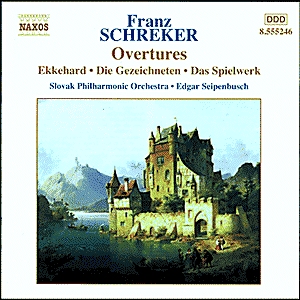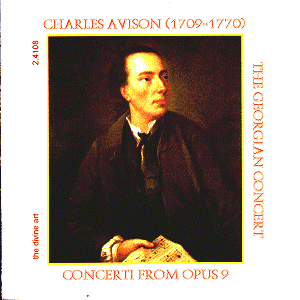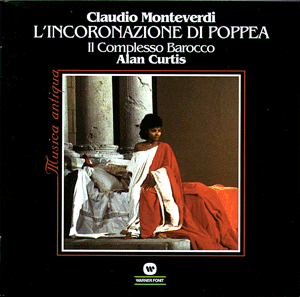 Composer: Arshak IKILIKIAN
Composer: Arshak IKILIKIAN
Works: The Courageous Nazar, Piano Concerto, Superpulse, Success, Crash
Performers: Nairy Grigorian (piano), Gevork Muradian (percussion), Thomas Sandberg (percussion), Birgitte Bærentzen Pihl (violin), Fritz Berthelsen (clarinets), Armenian National Radio SO
Recording: Yerevan, 1987 (orch), Aarhus, 2 Nov, 16-17 Dec 1999
Label: DACAPO 8.224181
Arshak Ikilikian, an Armenian composer who has made Denmark his home since 1992, emerges as a significant voice in contemporary classical music with a catalog exceeding 250 works. This recording features a selection of his compositions, notably his ballet “The Courageous Nazar” (1981) and the “Piano Concerto” (1986), alongside three innovative works that integrate computer technology. Ikilikian’s oeuvre reflects a unique blend of Armenian folk elements and modernist techniques, marking him as an intriguing figure within the landscape of late 20th-century composition.
“The Courageous Nazar” presents a modernist interpretation reminiscent of Prokofiev’s “The Love for Three Oranges.” Its vibrant orchestration and dramatic gestures create a rich tapestry of sound that evokes both splendor and disarray. The ballet’s movements are characterized by a kaleidoscopic interplay of motifs, where thematic ideas dart and weave through the orchestral texture, reminiscent of a spirited dance. The Armenian National Radio Symphony Orchestra, under Gevork Muradian, captures this complexity with an energetic performance that balances clarity and exuberance. The recording itself, made in Yerevan, exhibits a robust sound quality, with the orchestral colors vividly rendered, allowing each instrumental line to emerge distinctly.
The “Piano Concerto,” notably shorter at just under 13 minutes, adopts a more austere approach. Here, the interplay between the piano, played with deft sensitivity by Nairy Grigorian, and the string orchestra reveals a stark yet captivating dialogue. The second movement, with its entrancing stasis, showcases Ikilikian’s ability to create tension through minimalistic means. This movement offers echoes of Schoenberg and Rachmaninov, yet remains grounded in a contemporary idiom that favors introspection over bravura. The finale, with its nod to Shostakovich’s jester motif, reinforces Ikilikian’s skill in merging disparate influences into a cohesive narrative.
The three electronic works—”Superpulse,” “Success,” and “Crash”—represent a fascinating exploration of sound and technology. “Superpulse,” in particular, is a sonic journey through the human experience, tracing life’s rhythm from the heartbeat to a symphony of everyday sounds, including alarm clocks and bells. The precision of the recording allows these aural textures to resonate fully, showcasing the sophisticated layering of both acoustic and electronic elements. “Success” initiates with a violin solo that recalls Bloch’s “Schelomo,” before intertwining with computer-generated sounds that emulate North African instruments. This dialogue between the violin and technology is executed with clarity and depth, highlighting Ikilikian’s intent to bridge traditional and modern forms.
“Crash,” with its playful yet dramatic contrasts, exhibits a meticulous orchestration that balances the frenetic energy of the percussion and computer elements with the lyrical voice of the clarinets. Berthelsen’s clarinet work offers a grounded counterpoint to the electronic chaos, and as the piece unfolds, it hints at larger themes of nature and environment—evoking a sound world not dissimilar to Rautavaara’s “Cantus Arcticus” with its incorporation of bird sounds. The album ultimately suggests that Ikilikian is on the precipice of a larger project, potentially uniting solo instruments with electronic accompaniments in a way that recalls the chamber works of Malcolm Arnold.
Ikilikian’s artistic vision, as captured in this recording, presents a compelling synthesis of historical context and modern innovation. The performances, particularly from the Armenian National Radio Symphony Orchestra and the featured soloists, deliver a nuanced and engaging interpretation of these challenging yet rewarding works. The quality of the recording enhances the listening experience, providing clarity and depth to the intricate textures and timbres of Ikilikian’s compositions. This collection affirms Ikilikian’s place among the notable composers of his generation and offers a rich auditory exploration of contemporary classical music.



